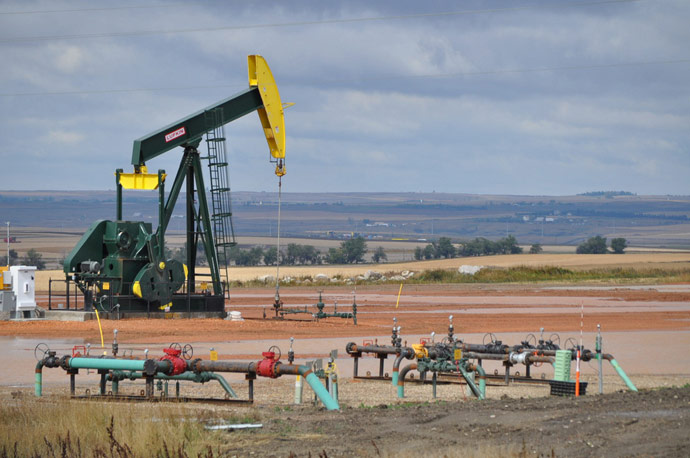North Dakota Reaches Record Oil & Gas Production: U.S. Slated To Outproduce Russia In 2013

Image via Flickr/ porchlife
For the second month in a row, the state’s Department of Mineral Resources announced Tuesday that North Dakota produced an average of 911,242 barrels of oil a day in August, a jump from the record of an average 875,736 barrels a day in July.
Two years ago, North Dakota pumped on average a little over 446,000 barrels a day.
Breaking the previous record of 972,058 cubic feet of natural gas in July, the state produced an average of 1 million cubic feet a day in the month of August. North Dakota also hit a record of producing wells: 9,452 wells in August, up from 9,334 in July.
Most production in the state came from the Bakken and Three Forks Shale formations. Techniques such as hydraulic fracturing and horizontal drilling have released oil and gas trapped in the shale rock.
North Dakota has garnered some attention recently for other, more unscrupulous reasons: the state is dealing with the aftermath of an oil spill from a pipeline rupture.
A farmer near Tioga went out to harvest wheat in late September and found a mini oil gusher from a Tesoro Logistics LP pipeline. Corrosion is suspected to have played a part in the line break. More than 20,000 barrels of oil are thought to have contaminated the field, four times as much oil as flooded an Arkansas subdivision from an Exxon Mobil Corp. pipeline break in March.
Although the public was notified about the spill on last week, state authorities have announced that they followed all protocol in notifying the public of the spill, but that it was not a threat to public health as it was contained to the remote field, and did not threaten or reach water sources.
In other energy news, the U.S. may be on track to surpass Russia as the world’s largest oil and natural gas producer this year, but the country still ranks fifth out of 13 in terms of overall energy security, a report released Monday states.
According to the report by Roubini Global Economics and the group Securing America’s Future Energy, “Heavy” dependency on oil is the reason for the current ranking. While the ongoing oil boom and the improvement of vehicle fuel efficiency are playing a role in boosting energy security, it simply isn’t enough. Its heavy dependency on oil leaves the U.S. economy vulnerable to high and volatile oil prices.
U.S. and Russian energy production over the past couple of years have been nearly equivalent. The U.S. will end 2013 as the world’s largest producer of petroleum and natural gas, surpassing both Russia and Saudi Arabia, the Energy Information Administration said in early October. The EIA estimates combined U.S. petroleum and gas production will reach nearly 25 million barrels of oil a day, out producing Russia by 5 quadrillion Btu.









































